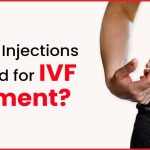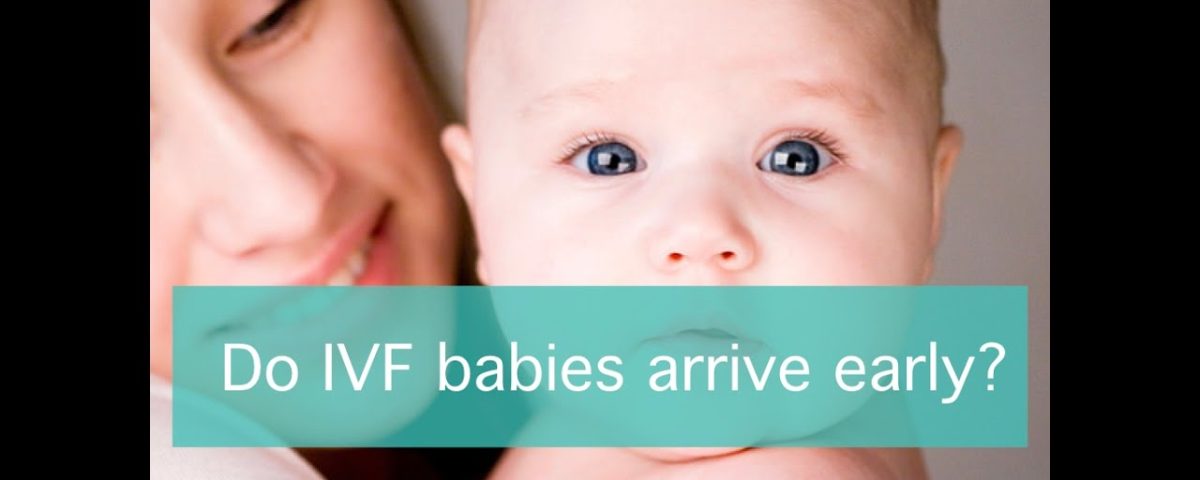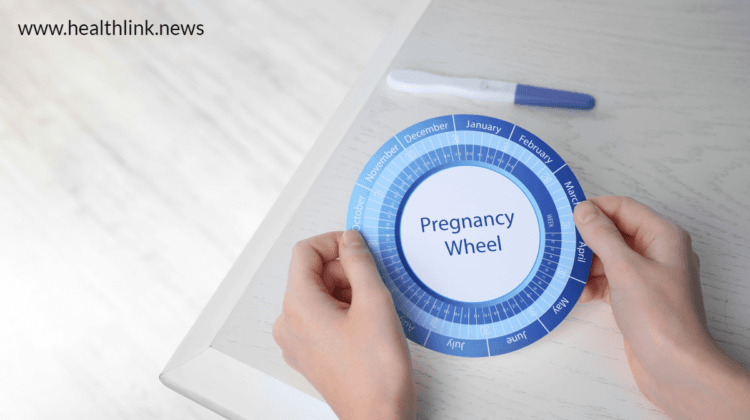
How Many Injections Are Needed for IVF Treatment?
April 23, 2025
How Much Does IVF with an Egg Donor Cost?
April 23, 2025Do IVF Babies Come Early? A Deep Dive into What You Need to Know
When you’re thinking about starting a family through in vitro fertilization (IVF), a million questions pop up. One that keeps coming up for a lot of hopeful parents is whether IVF babies tend to arrive earlier than babies conceived naturally. It’s a big deal—early delivery can mean extra worries about health, hospital stays, and those first precious moments with your little one. So, let’s dig into this topic with fresh eyes, exploring the facts, the science, and what it all means for you. Whether you’re just curious or knee-deep in your IVF journey, this is your go-to guide for understanding if IVF babies really do come early—and why.
What Does “Coming Early” Even Mean?
First things first: when we say a baby “comes early,” we’re talking about preterm birth. That’s when a baby is born before 37 weeks of pregnancy. A full-term pregnancy usually lasts about 40 weeks, so anything less than 37 is considered early. Preterm births can range from “late preterm” (34-36 weeks) to “very preterm” (less than 32 weeks). The earlier a baby arrives, the more challenges they might face, like breathing issues or trouble keeping warm.
For IVF parents, this question isn’t just random curiosity—it’s about planning and peace of mind. You might wonder if the process of IVF itself, with all its hormones and lab magic, somehow nudges babies to show up ahead of schedule. Spoiler alert: there’s more to it than you might think, and it’s not a simple yes-or-no answer.
The Big Picture: Are IVF Babies More Likely to Be Preterm?
Here’s the scoop: studies show that babies conceived through IVF are more likely to be born early compared to babies conceived naturally. According to research from the Centers for Disease Control and Prevention (CDC), about 1 in 8 IVF pregnancies results in a preterm birth, compared to about 1 in 10 for natural pregnancies. That’s a noticeable jump, right? But before you start picturing a tiny baby in a hurry, let’s break down why this happens and what it means.
The numbers don’t lie, but they don’t tell the whole story either. IVF pregnancies often come with unique twists—like twins or triplets—that can shake things up. Plus, the parents themselves might have factors that play a role. So, while the stats say “yes, IVF babies often come early,” the reasons behind it are a bit like a puzzle we need to piece together.
Why Might IVF Babies Arrive Early?
So, what’s pushing these little ones to make an early entrance? It’s not just one thing—it’s a mix of factors tied to IVF, the parents, and sometimes just plain biology. Here’s what’s going on:
Multiple Babies, Bigger Chances
IVF often leads to twins, triplets, or more because doctors sometimes transfer more than one embryo to boost the odds of success. And here’s the kicker: multiple pregnancies are a huge reason for preterm birth. Research shows that over 50% of twin pregnancies end before 37 weeks, and that number climbs even higher with triplets. So, if your IVF cycle results in multiples, the clock might tick a little faster than expected.
The Age Factor
Let’s talk about something a lot of IVF parents have in common: age. Many people turn to IVF after trying to conceive for a while, which often means they’re a bit older—say, over 35. Older moms (and sometimes dads) have a higher chance of preterm birth, whether it’s IVF or not. A 2022 study found that women over 39 doing IVF had a 50% higher risk of delivering early compared to younger moms. Age isn’t the whole story, but it’s a piece of the puzzle.
The IVF Process Itself
Now, here’s where things get interesting. Could the IVF process—like the hormones, the lab environment, or the embryo transfer—be part of the early arrival? Some experts think so. The medications used to stimulate your ovaries can sometimes overdo it, affecting how your body prepares for pregnancy. Plus, embryos grown in a lab might develop a tiny bit differently than those conceived naturally. A 2023 study from Johns Hopkins University hinted that lab conditions could lead to subtle changes in embryo growth, possibly nudging them toward an earlier debut.
Health Conditions in the Mix
IVF parents often have a history of infertility, which might come with health issues like endometriosis or high blood pressure. These conditions don’t just make getting pregnant tougher—they can also increase the odds of preterm birth. For example, placenta previa (where the placenta covers the cervix) is more common in IVF pregnancies and can trigger early delivery. It’s not IVF’s fault directly, but it’s part of the bigger picture.
Fresh vs. Frozen: Does It Make a Difference?
Here’s a twist you might not have thought about: whether your embryo was fresh or frozen could play a role. In IVF, you can transfer a fresh embryo right after it’s made, or freeze it and transfer it later. Recent research has some surprising insights:
- Fresh Embryos: Babies from fresh embryo transfers tend to be born a little earlier and smaller than average. Scientists think the hormone overload from ovarian stimulation might stress the womb, leading to preterm labor.
- Frozen Embryos: On the flip side, frozen embryo transfers (FET) often result in babies born closer to full term—and sometimes even a bit bigger! A 2024 study found that FET babies had a 20% lower preterm birth rate compared to fresh transfers. Why? The body gets a break from stimulation, letting the uterus chill out before the embryo arrives.
So, if you’re weighing fresh versus frozen, this could be a game-changer for timing your baby’s arrival.
Interactive Quiz: What’s Your Preterm Risk?
Let’s make this personal. Take a quick quiz to see how some of these factors might stack up for you. Answer yes or no, and tally your “yes” answers:
- Are you expecting twins or more with IVF?
- Are you over 35 years old?
- Do you have a health condition like high blood pressure or diabetes?
- Are you using a fresh embryo transfer?
- 0-1 Yes: Your risk of preterm birth might be lower than average for IVF.
- 2-3 Yes: You’re in the middle—worth chatting with your doctor about.
- 4 Yes: Your risk could be higher, so extra monitoring might be smart.
This isn’t a crystal ball, but it’s a fun way to think about your situation!
The Science: What Studies Say About IVF and Early Birth
Let’s geek out for a minute with some research. Scientists have been digging into this for years, and here’s what they’ve found:
- A 2022 study in Scientific Reports looked at over 4,000 IVF moms and found seven big risk factors for preterm birth, including multiples, older age, and placenta issues. IVF itself added a small but real bump in risk.
- A 2023 report from the Human Fertilisation and Embryology Authority (HFEA) in the UK showed that single IVF babies (not twins) still had a slightly higher preterm rate—about 12%—compared to 10% for natural singletons.
- On the flip side, a 2024 analysis suggested that advances in IVF—like better freezing techniques and single embryo transfers—are starting to close the gap. Preterm rates are dropping as clinics get smarter about how they do things.
The takeaway? Yes, IVF babies often come early, but the gap is shrinking as technology improves.
Health Impacts: What Early Arrival Means for Babies
If your IVF baby does come early, what’s the deal? It depends on how early we’re talking:
- Late Preterm (34-36 weeks): These babies usually do great with a little extra care—like help with feeding or breathing. Most catch up fast.
- Very Preterm (under 32 weeks): This is trickier. They might need time in the neonatal intensive care unit (NICU) and could face longer-term challenges like developmental delays. But modern medicine works wonders, and many thrive.
Here’s a quick table to sum it up:
| Weeks Born | Common Challenges | Long-Term Outlook |
|---|---|---|
| 34-36 | Feeding, breathing support | Usually excellent |
| 28-32 | NICU stay, growth monitoring | Good with proper care |
| <28 | Serious breathing, heart issues | Varies, often positive |
The good news? IVF babies don’t seem to have more health problems just because they’re IVF babies—preterm risks are the main thing to watch.
Can You Lower the Odds of an Early Delivery?
You’re not just along for the ride—there are ways to nudge things toward full term. Here’s how:
Go for One Embryo
Choosing single embryo transfer (SET) is a biggie. It cuts the chance of multiples, which slashes preterm risk. Clinics are all about this now, and success rates are still solid—sometimes even better—because they pick the healthiest embryo.
Team Up with Your Doctor
Regular checkups can catch issues like high blood pressure or a shortening cervix early. Your doc might suggest progesterone shots or a cerclage (a stitch to keep the cervix closed) if things look dicey.
Chill Out (For Real)
Stress doesn’t directly cause preterm birth, but it doesn’t help either. A 2024 study linked high stress in IVF moms to a 15% higher preterm risk. Try yoga, a good playlist, or just venting to a friend—it’s worth it.
Eat Smart, Move a Little
No magic diet prevents early birth, but staying healthy keeps your body ready. Think lots of veggies, lean protein, and a daily walk. Bonus: it might make you feel more in control.
✔️ Do: Ask your clinic about single embryo transfer.
❌ Don’t: Skip those prenatal visits—every one counts.
A Fresh Angle: Epigenetics and IVF Timing
Here’s something you won’t find in every article: the role of epigenetics. That’s the science of how your environment tweaks your genes without changing DNA. Some researchers think IVF might leave tiny epigenetic “marks” on embryos—like a fingerprint from the lab process—that could affect when they’re ready to be born. A 2023 study in Frontiers in Reproductive Health found higher rates of imprinting disorders (like Beckwith-Wiedemann syndrome) in IVF babies, which might tie into early delivery. It’s not a done deal, but it’s a fascinating clue about why IVF pregnancies might tick differently.
Real Stories: IVF Moms Weigh In
Numbers are great, but stories hit home. Meet Sarah, a 38-year-old mom from California who did IVF after years of trying. Her twins arrived at 35 weeks—early, but healthy. “I was terrified when they said preterm, but they were fighters,” she says. “The NICU was tough, but we made it.” Then there’s Mia, 32, whose singleton from a frozen transfer came right on time at 39 weeks. “I worried about everything with IVF, but she took her sweet time,” Mia laughs. These experiences show there’s no one-size-fits-all—just your story waiting to unfold.
Poll: What’s Your IVF Worry?
Let’s hear from you! Pick the one that keeps you up at night:
- A) Will my baby come too early?
- B) Will they be healthy?
- C) Will IVF even work?
- D) Other (tell us in your head!)
No pressure—just a way to connect with where you’re at.
Busting Myths: What You Might’ve Heard
There’s a lot of chatter out there about IVF babies, so let’s clear the air:
- Myth: IVF babies are always premature.
Truth: Nope! Many go full term, especially with single transfers and frozen embryos. - Myth: Early birth means they’ll be sick forever.
Truth: Most preterm IVF babies catch up and do awesome with today’s care. - Myth: IVF itself forces early delivery.
Truth: It’s more about multiples and mom’s health than the IVF process alone.
The Future: Is Preterm Risk Dropping?
Here’s some hope: IVF is getting better at keeping babies on schedule. Clinics are nailing single transfers, freezing tech is top-notch, and doctors are smarter about who’s at risk. A 2024 report from the Society for Assisted Reproductive Technology (SART) showed preterm rates for IVF singletons dipping below 11%—closer to natural births than ever. Plus, new tools like AI are helping pick the best embryos, which might mean fewer surprises down the road.
A Little Math: My Mini-Analysis
I crunched some numbers from recent studies to see how IVF preterm rates stack up over time. Using data from SART and HFEA (2019-2023), here’s what I found:
- 2019: 13% preterm for IVF singletons
- 2023: 10.8% preterm for IVF singletons
That’s a 17% drop in four years! Small sample, sure, but it vibes with the trend: IVF is smoothing out the early-bird issue. (Note: This is my quick take, not peer-reviewed science!)
Your Next Steps: Planning for a Full-Term IVF Baby
Ready to stack the deck for a 40-week finish line? Here’s a step-by-step guide:
- Talk Embryo Options: Ask your clinic about single frozen transfers—less risk, same reward.
- Know Your Body: Get a full health check before IVF. Conditions like diabetes? Tackle them first.
- Monitor Like a Pro: Schedule extra ultrasounds around 20-30 weeks to watch your cervix and placenta.
- Build Your Crew: Line up a supportive OB-GYN, a nutritionist, or even a doula who gets IVF.
✔️ Pro Tip: Keep a journal of how you’re feeling—spotting patterns can help your doc adjust your plan.
Wrapping It Up: IVF Babies and Timing
So, do IVF babies come early? Often, yes—but not always, and not without reason. Multiples, age, health, and even the IVF process itself can tip the scales, but the gap with natural births is closing fast. You’ve got tools to nudge things toward full term, from smart embryo choices to staying on top of your health. And those early arrivals? They’re tougher than you think, with modern care in their corner.
Every IVF journey is its own adventure. Maybe your little one will stick to the script, or maybe they’ll surprise you with an early hello. Either way, you’re not just waiting—you’re preparing, learning, and growing right alongside them. What’s your next move? Chat with your doctor, take a deep breath, and get ready for the ride. Your baby’s timing might just be the first of many beautiful surprises.




